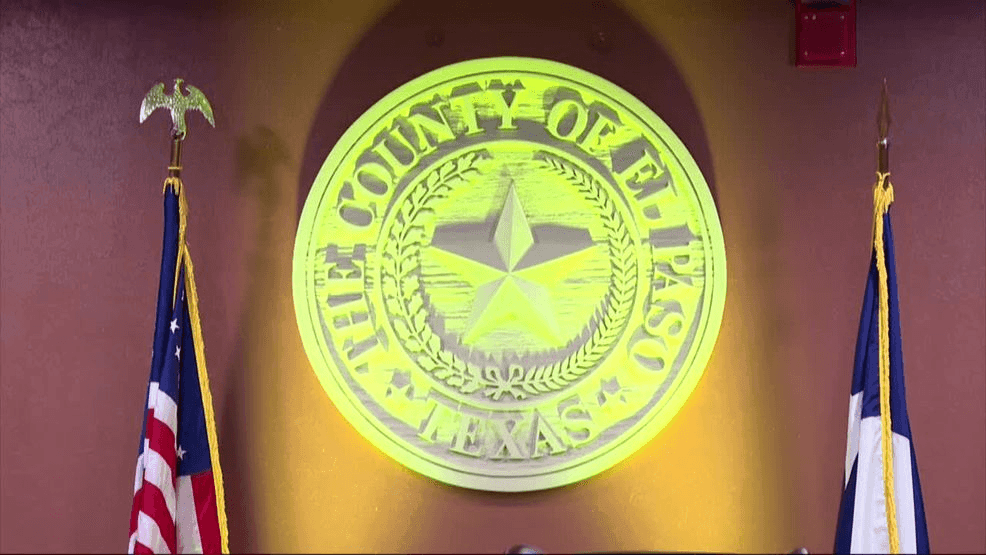El Paso County Grapples with Significant Budget Deficit, Commissioners Seek Solutions Amidst Financial Strain
EL PASO, Texas – El Paso County is facing a substantial budget deficit projected between $55 million and $60 million for the 2025 fiscal year, significantly higher than initial estimates, raising concerns among county officials and prompting a search for solutions to address the financial shortfall. County Commissioner David Stout clarified that earlier reports indicating a deficit of $20 million to $25 million represented the difference between the current deficit and the county’s target deficit, not the actual shortfall. This clarification comes amidst concerns about the county’s dwindling reserves and the potential impact on essential services.
The substantial deficit has prompted concerns about the county’s financial stability and its ability to maintain essential services for residents. While Commissioner Stout assured the public that all required services would be delivered, he acknowledged the possibility of service cuts in the coming years if the deficit is not adequately addressed. The county’s reserve funds, which currently stand at approximately $76 million, are projected to plummet to $21 million within a year, further exacerbating the financial challenges.
County officials are exploring various options to mitigate the deficit and ensure the continued provision of vital services. Commissioner Iliana Holguin acknowledged the difficulties posed by state program cuts and rising expenses, emphasizing the county’s commitment to finding sufficient cuts to avoid increasing taxes for residents. Both Commissioners Stout and Holguin pointed out that the county has already received 90% of its anticipated revenue for 2025, while only expending 65% of the projected budget, suggesting a potential for a more favorable outcome than initially feared.
The county’s financial woes stem from a confluence of factors, including state-level budget cuts, rising operational costs, and the increasing demand for county services. State program cuts have reduced the funding available to counties, impacting their ability to provide essential services. Simultaneously, the county faces escalating costs for personnel, infrastructure, and other operational expenses. Furthermore, the growing population and evolving needs of the community have placed increased demands on county services, further straining the budget.
County commissioners are actively pursuing strategies to address the deficit and stabilize the county’s finances. One primary goal is to avoid raising property taxes for residents, recognizing the potential financial burden on homeowners. Commissioners are exploring alternative revenue sources and identifying areas within the budget where cuts can be made without compromising essential services. This involves careful review of current spending, prioritizing essential programs, and seeking innovative solutions to streamline operations and enhance efficiency.
The search for new revenue streams is a critical component of the county’s strategy to address the deficit. This could involve exploring partnerships with private sector entities, seeking grants from state and federal agencies, and identifying opportunities to leverage existing resources more effectively. Simultaneously, the county is committed to a thorough review of its current expenditures to identify potential areas for cost savings. This process involves evaluating the effectiveness of existing programs, identifying redundancies, and seeking ways to streamline operations without impacting the quality or accessibility of essential services.
The county’s commitment to avoiding property tax increases reflects a sensitivity to the financial pressures faced by residents. Commissioners recognize that raising taxes could place an additional burden on homeowners and businesses, potentially impacting economic growth and stability. By prioritizing budget cuts and exploring alternative revenue sources, the county aims to mitigate the deficit while minimizing the impact on taxpayers.
As the county grapples with its financial challenges, transparency and open communication with the public remain paramount. County officials are committed to keeping residents informed about the budget situation, the strategies being pursued to address the deficit, and the potential impacts on county services. This commitment to transparency aims to build public trust and ensure that residents understand the county’s financial position and the efforts being made to ensure fiscal responsibility.
The county’s financial situation requires a comprehensive and collaborative approach involving all stakeholders. County officials are working closely with department heads, community organizations, and residents to identify solutions and implement strategies to address the budget shortfall. This collaborative approach aims to leverage the collective expertise and resources of the community to navigate the financial challenges and ensure the continued provision of essential services.
The coming months will be critical as the county navigates these financial challenges. The commitment to avoiding tax increases, identifying new revenue sources, and implementing strategic budget cuts will be central to the county’s efforts to stabilize its finances and ensure the continued delivery of essential services to residents. The county’s transparent approach and commitment to collaboration with stakeholders will be crucial to navigating this complex situation and building a sustainable financial future for El Paso County.


